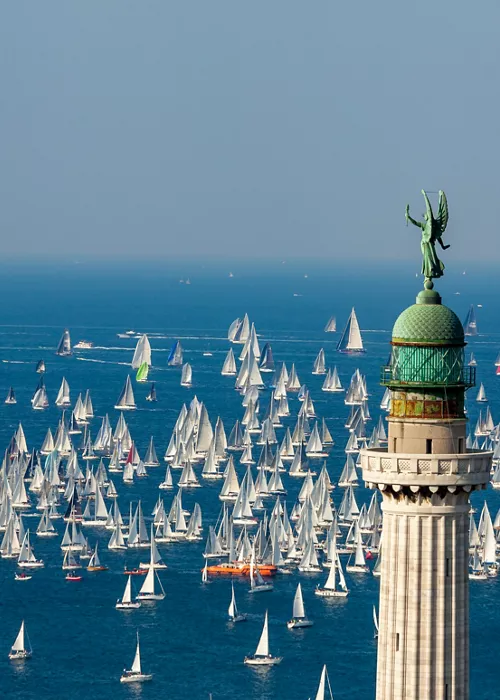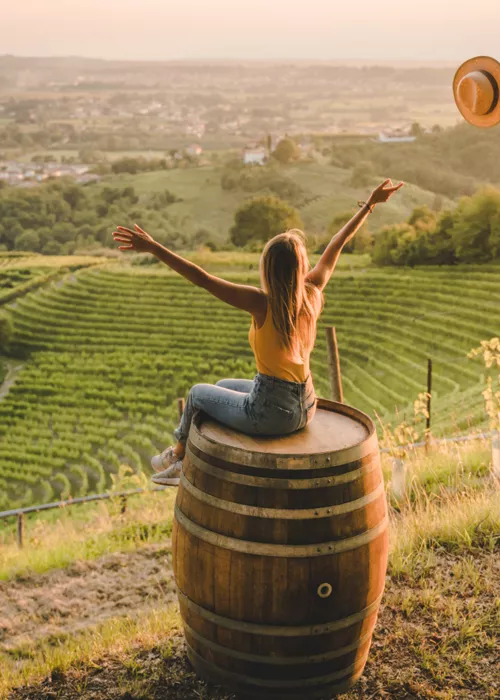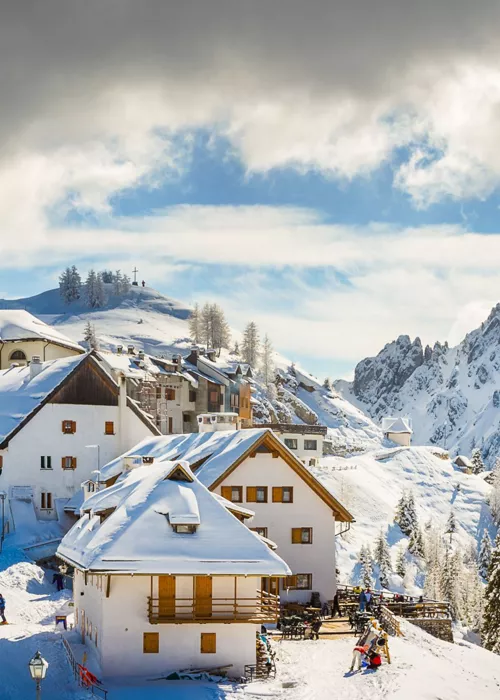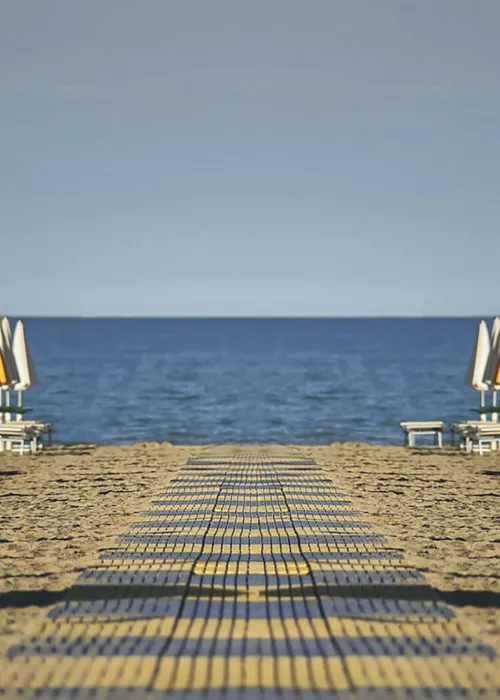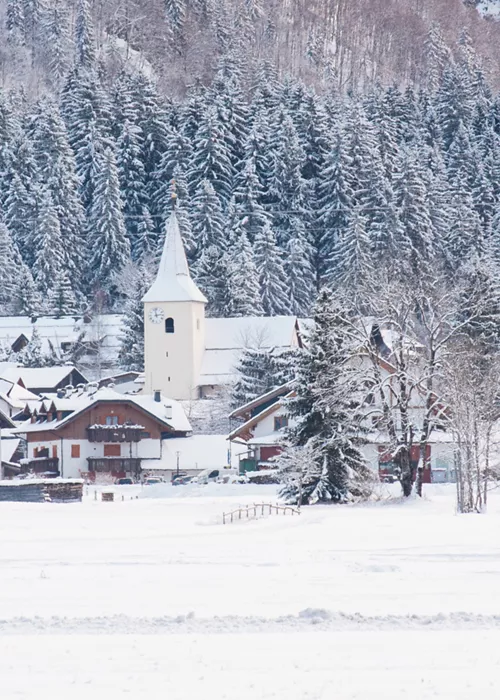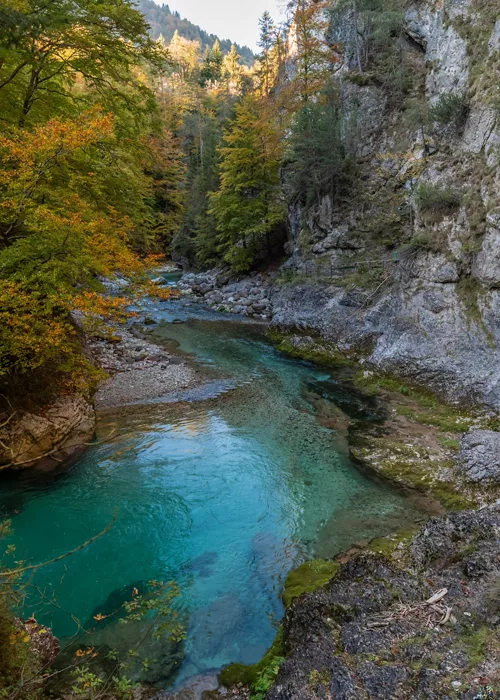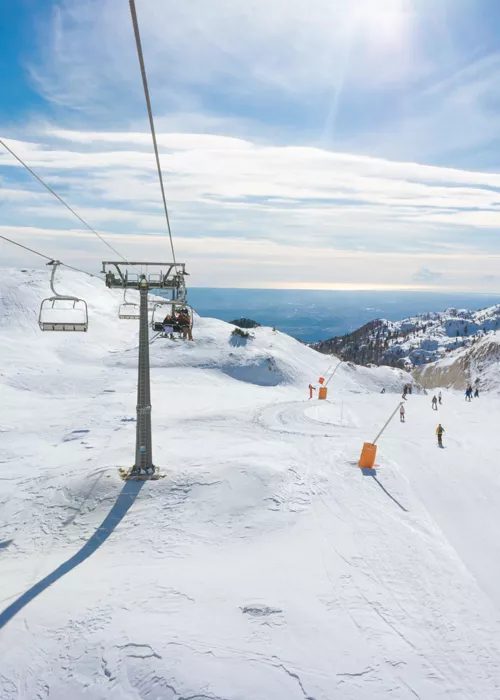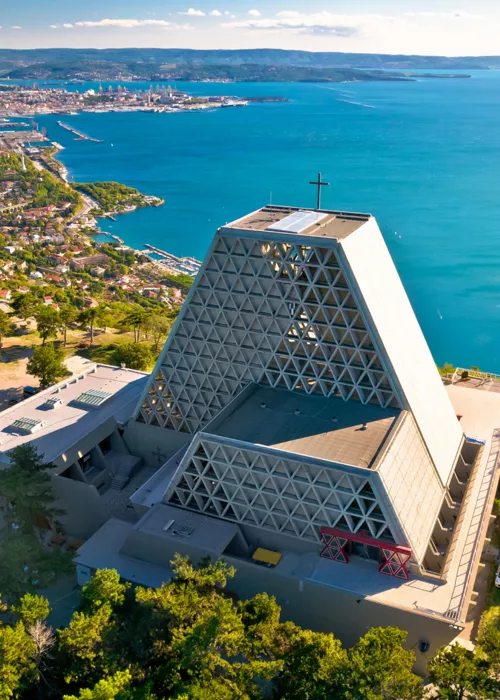The wine & taste route in Friuli Venezia Giulia
5 minutes
In Friuli Venezia Giulia, the land and its cuisine are bound together by an unbreakable bond. The extraordinary biodiversity of this region, which stems from its exceptional geomorphological and naturalistic variety, is also expressed in its cultural elements, from languages to traditions to gastronomy. And perhaps it is precisely through its cuisine that one can immediately perceive the legacy that comes from centuries of encounters between different peoples and cultures. Here, traditional Mediterranean products and flavours blend with those of the Balkans and Central Europe, without forgetting the simple, authentic dishes of popular cuisine. The Wine and Flavours Route offers six different itineraries: the aim is to provide travellers with a guide that will inspire them to experience every facet of our region with curiosity and interest.
Among peaks and pastures: tastes from the mountains
It's always mountains, but it's always different. From the Dolomites, a UNESCO World Heritage Site, to the Karst, crossing the Carnic and Julian Alps, the landscape changes in shape and colour, language and customs, but retains important common denominators: respect for the land, the authenticity of the people who live there, and the sustainable use of its resources. Here in the mountains, you can discover and taste a wide variety of cheeses and dairy products, made from cow's, goat's and sheep's milk, produced by small family businesses that keep a long tradition alive. Starting with the renowned Montasio DOP cheese, you can sample a range of unmissable and characteristic mountain cheeses, formadi frant, smoked Carnic ricotta, which is essential in the preparation of pumpkin gnocchi or as a garnish for the delicious Carnic first course par excellence: cjarsons, semi-sweet ravioli filled with a mixture of wild herbs or potatoes, with a mixture of raisins and sometimes even chocolate, seasoned after cooking with melted butter and cinnamon. Unmissable stops on this itinerary of flavours include typical products such as Sauris ham and pitina, both IGP products, or varhackara, a pesto created to enhance lard by preserving scraps of salami, smoked speck, guanciale, pancetta and ossocollo. Among the desserts, one cannot forget the gubana delle Valli del Natisone, which some people wash down with a little Friulian grappa or slivovitz, a plum brandy typical of the Slavic world.
Hills of wine and art
History and art characterise the hills of Friuli Venezia Giulia, with towns that are worth a visit in their own right: Cividale del Friuli, Cormòns, Gorizia and San Daniele del Friuli. The beauty of the area rivals the high quality of its food and wine: the land, climate and expertise of the producers have come together to create wines that can only be made here. Excellent whites, full-bodied reds, the famous Picolit: choosing the right glass to accompany a plate of San Daniele ham or a dish prepared with Rosa di Gorizia will be a pleasant dilemma. Continue with musetto accompanied by brovada, a side dish made with purple turnips left to macerate for two months in the acidic marc of black grapes, or a slice of bread topped with pestàt di Fagagna, made with lard and aromatic herbs, or a wedge of tasty, artisan-made dairy cheese.
Between rivers and vineyards: the green heart of Pordenone
The surrounding hills and the Pordenone area are home to crystal-clear waterways, picturesque villages and green forests. However, there are also stony and gravelly soils, formed by deposits left by the Meduna, Cellina and Tagliamento rivers. These are called Magredi and today they are the terroir of the Grave DOC wine area, the largest in Friuli Venezia Giulia. Along this itinerary, where Friulian culture meets Venetian culture, a gastronomic tradition of the highest level has developed over time. It includes recipes based on goose and freshwater fish dishes, such as salmon trout. Along the way, you will also encounter delicacies such as the delicate figomoro di Caneva and the unique Asìno cheese. But don't forget to try the specialities prepared with Cavasso onions or the soups and side dishes made with San Quirino beans.
Generous plains and homegrown flavors
Around the city of Udine, vegetables were grown and pigs were raised, which are still the main ingredients of Friulian cuisine today. While the famous frico, a traditional peasant recipe prepared in a pan with potatoes, onions and lots of cheese, is the main gastronomic symbol of the area, it is in fact pork products and vegetables that most characterise the menus of Udine's restaurants. Among the best known are Friulian salami, sausage, soppressa, lard, marcundela and, of course, musetto. Tavagnacco is home to delicious white asparagus, whose lack of colour and delicate flavour are the result of a particular method of cultivating Asparagus officinalis. Every year, at the beginning of September, the city celebrates the quality of local products and wines at Friuli DOC. The stars of the event are, of course, the taverns of Udine, true temples of Friulian hospitality.
On the Karst plateau, between stone and wind
Influenced by Slavic traditions and the cultures of the peoples of what was once the Austro-Hungarian Empire, Trieste offers visitors the splendour of a city of unique beauty, but also ready to entice them with dishes and products ranging from the Adriatic Sea to the hinterland, which provides quality ingredients every day, such as Tergeste DOP olive oil. The historic cafés in the city centre and the typical Trieste buffets are well worth a visit, where you can sample specialities such as porcina or cotto with horseradish and mustard. Surrounding the city, the rocky limestone plateau of the Karst offers spectacular scenery and is characterised by flora and fauna of considerable naturalistic importance. This area produces red wines with character, such as Terrano, and white wines with a strong mineral component, such as Vitovska and Malvasia. The village of Prosecco also belongs to this area, whose name is linked to the territorial designation of the DOC of the same name. A trip to the Karst is not complete without a stop at one of its osmize, traditional refreshment points, often housed in private homes, where eggs, cold cuts, delicious cheeses such as Jamar and exquisite homemade desserts are sold and consumed.
Between sea and lagoon: the riviera of flavors
With its varied landscape, beaches, river mouths and cliffs overlooking the sea, the Adriatic coast of Friuli Venezia Giulia offers equally stimulating ideas during breaks between excursions, swims or walks on the golden sand. The sea and lagoon offer extraordinary quality. Shellfish such as spider crabs, scampi, lobsters, mantis shrimp and prawns grace the menus of local restaurants, while the quality of sole, sea bass, striped sea bream, white sea bream, gilthead sea bream, croaker, flounder and eel caught in the northern Adriatic requires only simple preparation to preserve their organoleptic qualities. In the Grado area, try the famous boreto, a fisherman's dish served with white polenta. The breaded anchovies - or sardoni - and sardines, fried or in saor, are also characteristic and delicious. Classic first courses and appetisers include clams, capelunghe, scallops, fasolari and mussels. Our itinerary includes plenty of restaurants and trattorias where you can satisfy your craving for fresh fish paired with a delicious Friulian white wine: by the sea, on the lagoon or in the immediate hinterland.

























